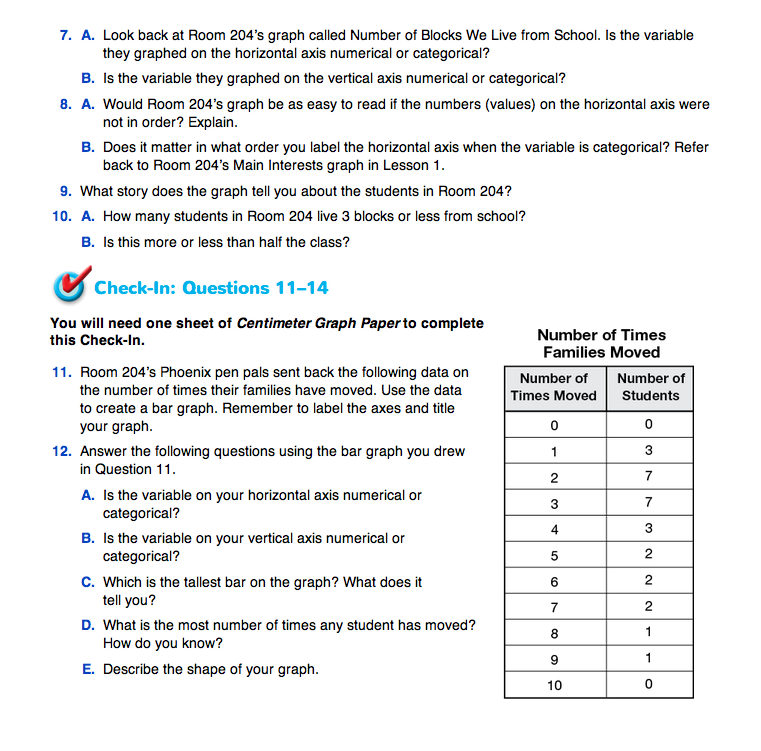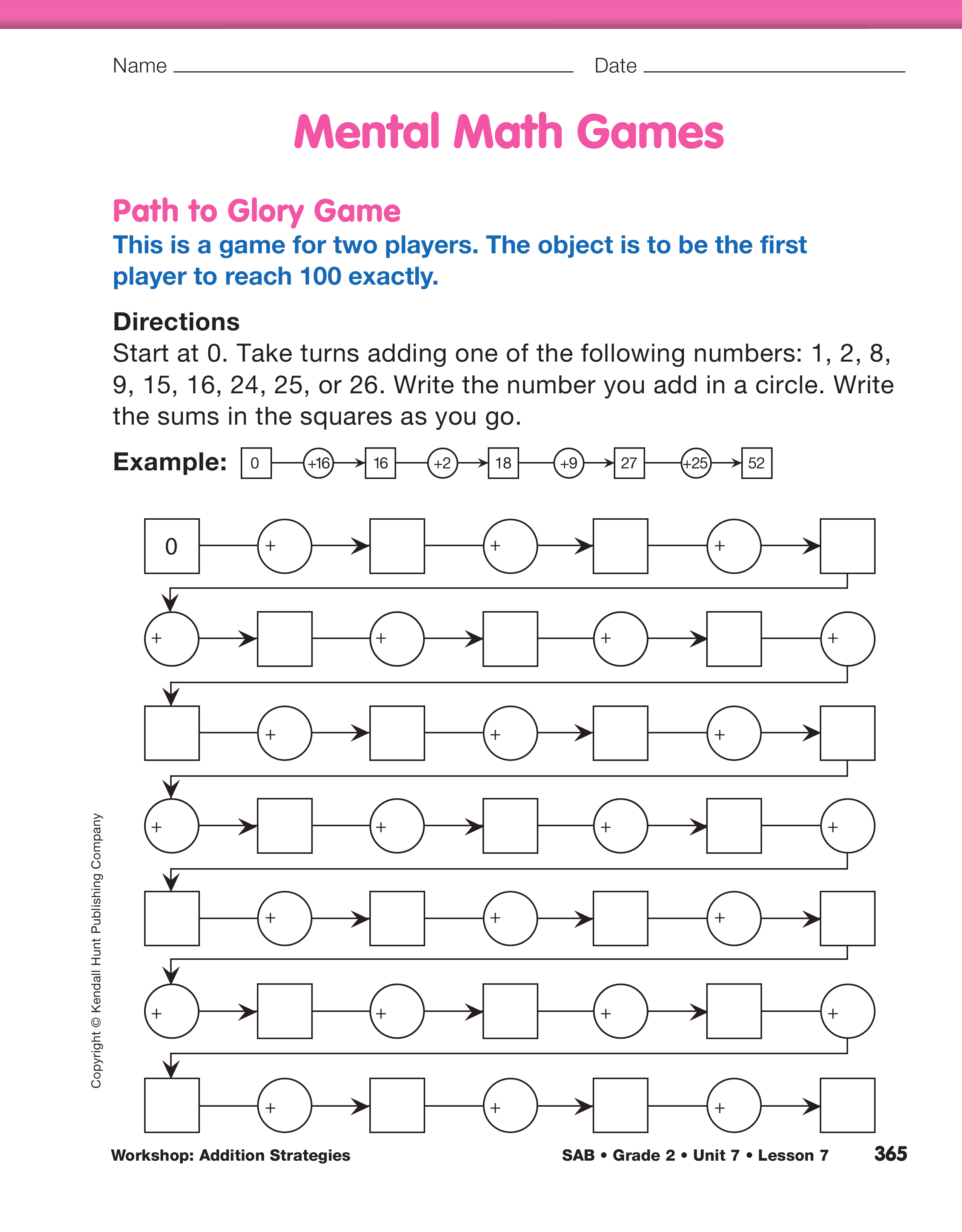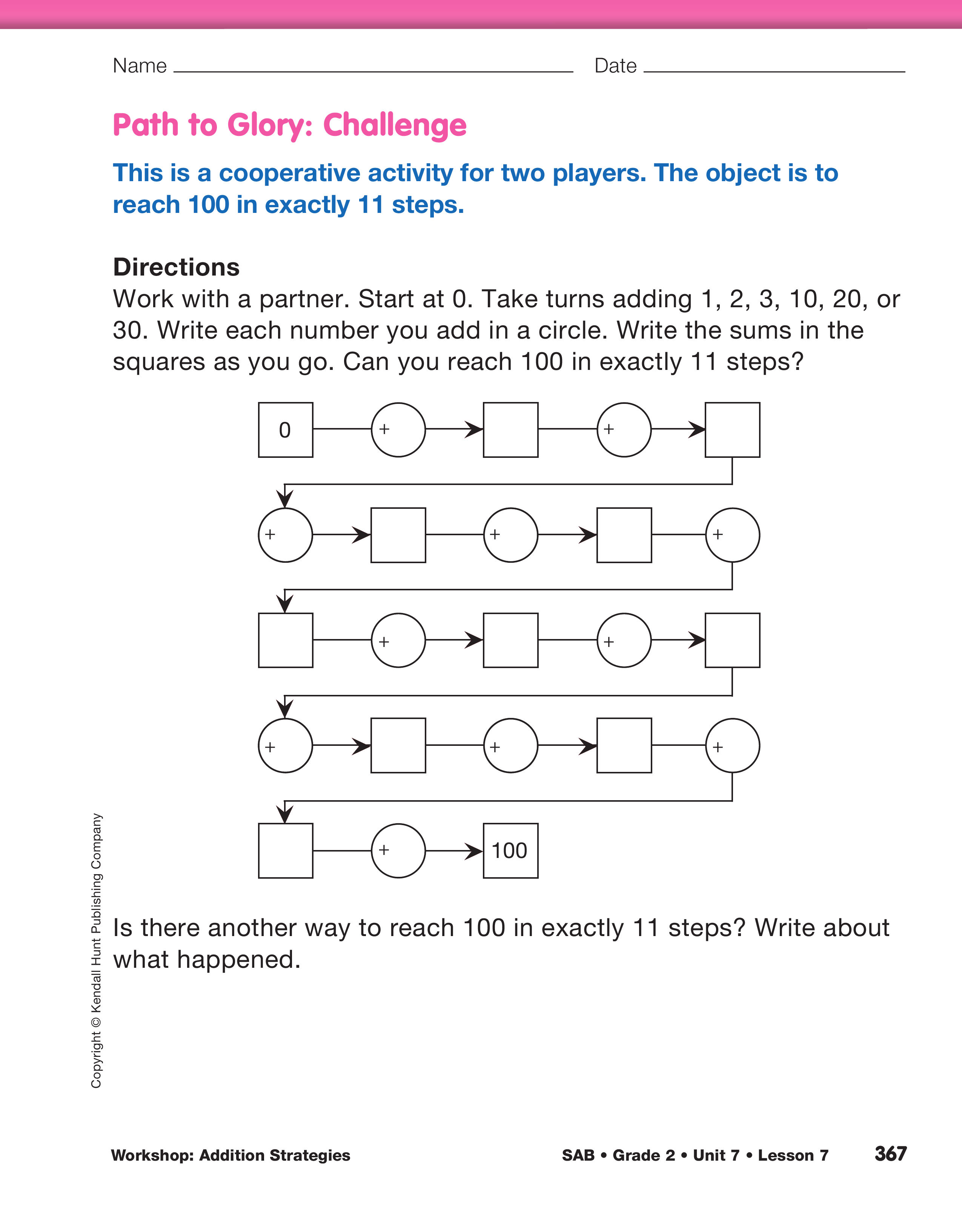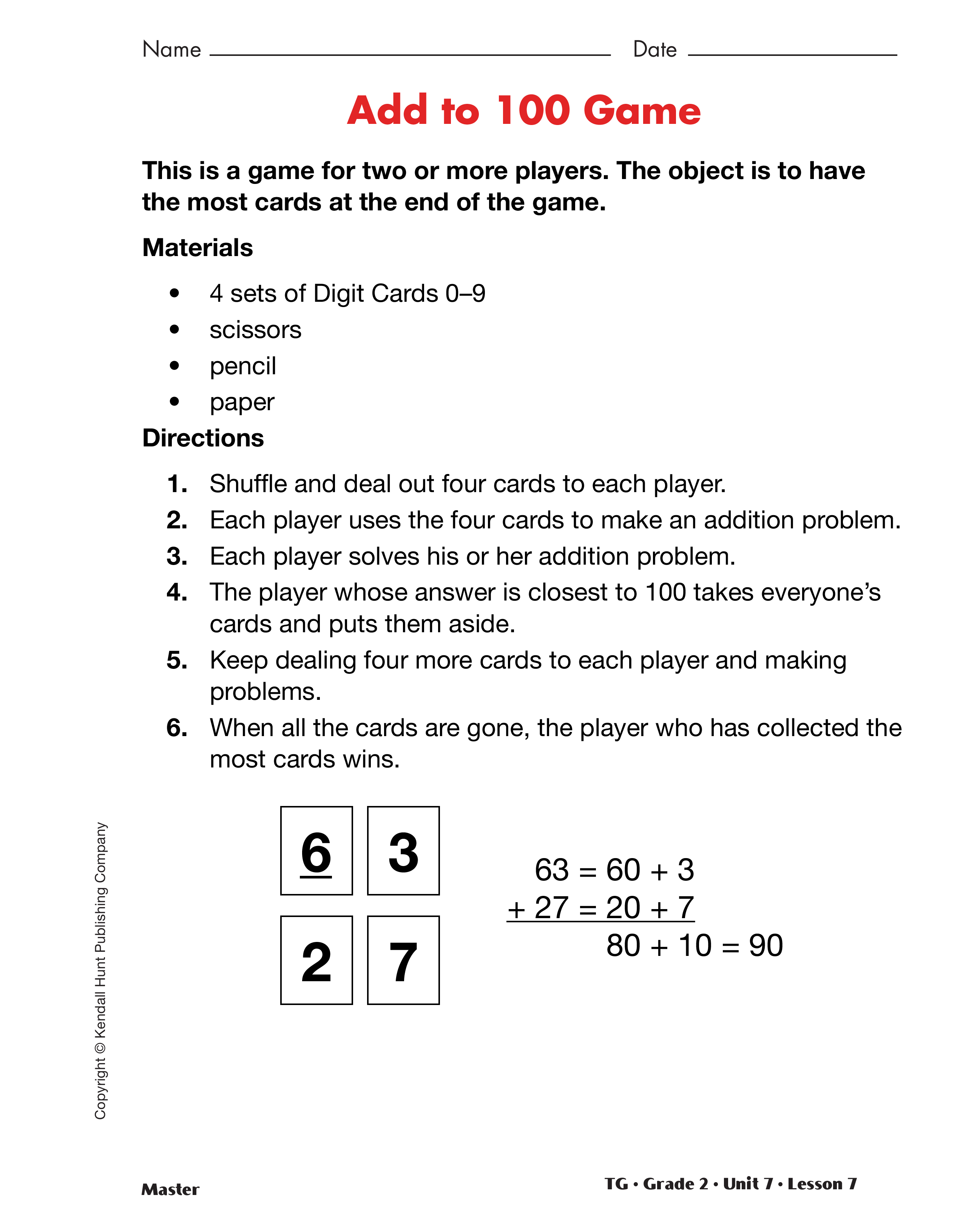Workshop: Addition Strategies
Est. Class Sessions: 2–3Developing the Lesson
Part 2. Mental Math Games
Demonstrate Add to 100 Game. Students who need more practice developing strategies for solving two-digit and three-digit addition problems can continue working on the choices in the first column of the menu, Addition Strategies Practice. Others, who are ready, will make choices from the second column, Mental Math Games.
Development of mental math strategies helps students develop number sense and flexibility with numbers. At times, using mental math is often the most efficient means of solving problems, either for finding exact answers or for finding estimates when appropriate. Students need to have many opportunities to choose an efficient strategy for a given problem based on the numbers in the problems and the real-world context. The games in this section of the Workshop give students opportunities to develop and practice mental math strategies that make sense to them. Some strategies may include some mental calculations along with a few written notes. See Content Note.
For those students who are ready to move on, ask them to take out their Addition Strategies Workshop Menu. In this part of the Workshop, students will consider the activities from the second column. Provide an overview of students´ mental math game choices.
Display the directions on the Add to 100 Game Master. You will need display sets of digit cards that you prepared prior to the lesson. See Materials Preparation. Read the directions to the game aloud. Shuffle the cards and ask a volunteer to play a demonstration game with you. Each player uses four cards to make an addition problem. The player whose answer is closest to 100 takes all the cards. Explain to students that sums can be more than or less than 100, and that they will need to determine whose sum is closest to 100. Encourage them to use a number line to decide. The player with the most cards at the end of the game wins.
Introduce Path to Glory Games. The two versions of this activity, Path to Glory Game and Path to Glory: Challenge, are in the Mental Math Games pages of the Student Activity Book. Display the Path to Glory Game section and explain the directions to the class. Use the example on the page to demonstrate how to play. The game is for two players and the goal is to be the first player to reach 100 exactly. To help students choose between the two versions, explain that Path to Glory: Challenge is a cooperative exercise between two students. Partners work together to try to reach 100 in exactly 11 steps. The game provides practice with addition while requiring a higher level of strategizing.
Use Mental Math Strategies. Review the activities in the second column of the menu as you show students the location of each learning center, if you chose to organize materials that way. Then ask each student to choose and circle two activities from the second column. Remind students that they can refer to the Addition Strategies Menu in the Student Activity Book Reference section as they work and play the games. Have tools such as the 200 Chart, number lines, and base-ten pieces readily available. If you choose to have the games at learning centers, organize students into the center activities as you circulate and monitor their choices.


















